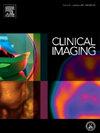美国放射学妇女协会(AAWR):关于带薪家庭和医疗假的官方声明。
IF 1.5
4区 医学
Q3 RADIOLOGY, NUCLEAR MEDICINE & MEDICAL IMAGING
引用次数: 0
摘要
医生的福利对高质量的病人护理至关重要,然而在美国缺乏普遍可用的带薪家庭和医疗假(PFML)破坏了这一原则。工作和个人责任之间的动态相互作用——特别是在重大的生活事件中,如分娩、生病或照顾——会影响医疗保健提供者的身心健康,最终影响患者的治疗结果。虽然《家庭和医疗休假法》(FMLA)规定了无薪、受工作保护的休假,但它将许多工人排除在外,对妇女、少数民族和低收入家庭的影响尤为严重。大量证据表明,PFML改善了孕产妇和儿童健康,增加了劳动力保留率,并支持医疗专业的公平。包括美国放射学会(ACR)、美国放射学委员会(ABR)在内的医学协会和其他机构已经认识到制定一致的PFML政策的迫切需要。为了配合这些努力,美国女性放射科医师协会(AAWR)建议诊断放射学、介入放射学、放射肿瘤学、医学物理学和核医学的部门、实践和培训项目在12个月内为主治医生、医学物理学家和受训人员提供至少12周的带薪家庭/医疗假。AAWR进一步倡导制度支持措施,如保护哺乳时间、补贴儿童保育和灵活的促进政策,以确保公平实施。建立跨医学专业的国家PFML标准将使医疗保健系统与其为患者推广的原则保持一致,从而培养一支更加多样化、包容性和弹性的劳动力队伍。从学术部门到专业委员会,多层次的倡导方法为实现这一期待已久的改革提供了路线图。本文章由计算机程序翻译,如有差异,请以英文原文为准。
American association for women in radiology (AAWR): Official statement regarding paid family and medical leave (PFML)
Physician well-being is essential to high-quality patient care, yet the lack of universally available paid family and medical leave (PFML) in the United States undermines this principle. The dynamic interplay between work and personal responsibilities—especially during significant life events such as childbirth, illness, or caregiving—can impact healthcare providers' mental and physical health, ultimately affecting patient outcomes. While the Family and Medical Leave Act (FMLA) provides unpaid, job-protected leave, it excludes many workers and disproportionately impacts women, minorities, and low-income families. Extensive evidence shows that PFML improves maternal and child health, increases workforce retention, and supports equity in the medical profession. Medical societies, including the American College of Radiology (ACR), American Board of Radiology (ABR), and others have recognized the critical need for consistent PFML policies. In alignment with these efforts, the American Association for Women Radiologists (AAWR) recommends that departments, practices, and training programs in diagnostic radiology, interventional radiology, radiation oncology, medical physics, and nuclear medicine provide a minimum of 12 weeks of paid family/medical leave within a 12-month period for attending physicians, medical physicists, and trainees. The AAWR further advocates for institutional support measures such as protected lactation time, subsidized childcare, and flexible promotion policies to ensure equitable implementation. Establishing national PFML standards across medical specialties would align healthcare systems with the principles they promote for patients, fostering a more diverse, inclusive, and resilient workforce. A multi-tiered advocacy approach—from academic departments to specialty boards offers a roadmap to achieving this longoverdue reform.
求助全文
通过发布文献求助,成功后即可免费获取论文全文。
去求助
来源期刊

Clinical Imaging
医学-核医学
CiteScore
4.60
自引率
0.00%
发文量
265
审稿时长
35 days
期刊介绍:
The mission of Clinical Imaging is to publish, in a timely manner, the very best radiology research from the United States and around the world with special attention to the impact of medical imaging on patient care. The journal''s publications cover all imaging modalities, radiology issues related to patients, policy and practice improvements, and clinically-oriented imaging physics and informatics. The journal is a valuable resource for practicing radiologists, radiologists-in-training and other clinicians with an interest in imaging. Papers are carefully peer-reviewed and selected by our experienced subject editors who are leading experts spanning the range of imaging sub-specialties, which include:
-Body Imaging-
Breast Imaging-
Cardiothoracic Imaging-
Imaging Physics and Informatics-
Molecular Imaging and Nuclear Medicine-
Musculoskeletal and Emergency Imaging-
Neuroradiology-
Practice, Policy & Education-
Pediatric Imaging-
Vascular and Interventional Radiology
 求助内容:
求助内容: 应助结果提醒方式:
应助结果提醒方式:


